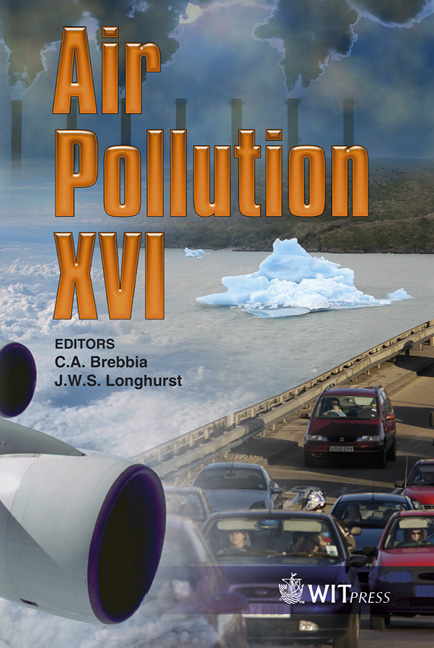Real Time Air Quality Forecasting Systems For Industrial Plants And Urban Areas By Using The MM5-CMAQ-EMIMO
Price
Free (open access)
Transaction
Volume
116
Pages
10
Page Range
225 - 234
Published
2008
Size
590 kb
Paper DOI
10.2495/AIR080241
Copyright
WIT Press
Author(s)
R. San José, J. L. Pérez, J. L. Morant & R. M. González
Abstract
During the last five years, we have been working intensively with the new generation of air quality modeling systems such as MM5-CMAQ (PSU/NCAR/EPA, US) and using our own emission model, EMIMO (UPM, 2006), the first version of which was developed several years ago and is in the process of continuous adaptation. Recently we have incorporated an adapted version of the CFD model MIMO (University of Karlsruhe, 2000) which includes a sophisticated cellular traffic model, CAMO (UPM, 2006), to model street level pollution with the numerical Eulerian models approach with a few meters of spatial resolution. The integrated system formed by an adapted version of MIMO and CAMO is called MICROSYS. The mesoscale air quality model MM5-CMAQ-EMIMO produces air concentrations in real-time and forecasting mode for urban and regional areas with 1 km spatial resolution. The MICROSYS model is implemented to simulate the air concentrations in one 1 km grid cell with 5–10 m spatial resolution and up to 200–300 m in height (over the maximum building heights in the 1 km grid cell). The MICROSYS model is run in diagnostic mode and uses the boundary and initial conditions from MM5-CMAQ-EMIMO. The system MM5-CMAQ-EMIMO-MICROSYS produces reliable air quality forecasts for urban areas with street level detail over the Internet. In this contribution we will show the special example applied to Las Palmas (Canary Islands, Spain). Additionally, the MM5-CMAQ-EMIMO has been used to find the air quality impact of several industrial plants such as combined cycle power and cement plants. The system uses sophisticated cluster technology to take advantage of distributed and shared memory machines in order to perform the parallel runs in an efficient and optimal way since the process should operate on a daily basis. We will also show the methodology and results of these applications in two industrial complexes in the surrounding area of Madrid City.
Keywords





